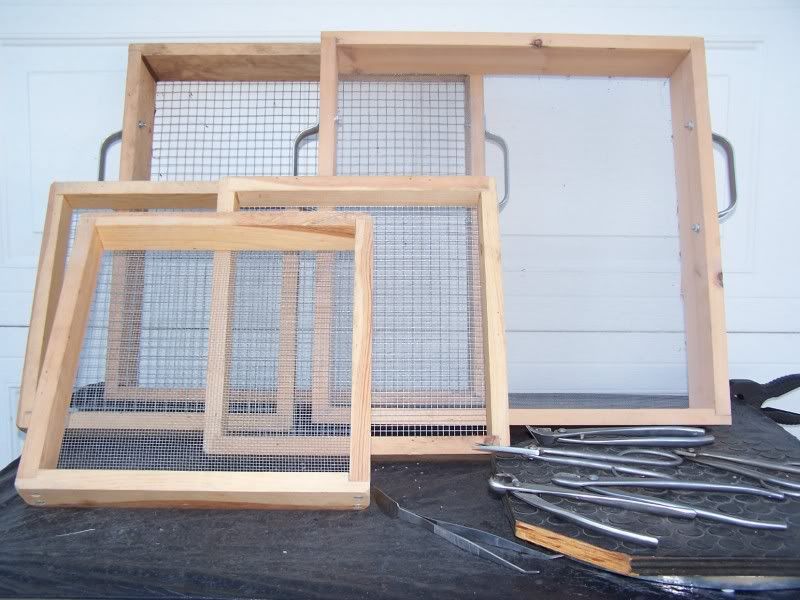 |
| Al's Soil Sieves |
In order to do so, you need some type of soil sieve (AKA soil filters, sifters, or screens). You may or may not find them at your local big box or speciality nursery, or major hardware store. Lowe's, Home Depot, and Armstong Garden Centers did not carry them (or claimed they didn't when I called).
After doing tons of research and competitive cost comparing, I concluded that building my own would work best.
My handy and gracious husband agreed to help me build them. Special thanks to David for making these for me and leaving me to my succulent obsession.
Materials
- Wood
- Hardware cloth (1/8", 1/4")
- Insect screen (1/16")
Tools
- Hammer & nails
- Staple gun & staples
- Utility sheers
- Working gloves
I got the idea to build my own sieves from this forum thread. Before I found Al's wooden frames (picture at top), I came across these common manufactured sieves.
 |
| Bonsai Sieves |
A common size you'll find at retail stores is a deep rectangular shape. You can get it at Walmart or Lee Valley. The major limtation is that there is only one screen size.
 |
| Photo Credit: Google Images |
Some gardeners swear by kitchen sieves (colanders, sifters) that have a metal mesh.
 |
| Compost Sieve |
Compost sieves tend to have larger openings.
Let's get started...
We already had the hammer and finishing nails in our tool box. My husband opted to buy a staple gun & staples for $20 at Lowe's since it would be the easiest way to make the sieves. Also, I bought special sheers at Ace Hardware, which I'll explain more below.
 |
| Wood |
He measured out the sieve frame to be 24"x24". I think a shorter size would have suited me better, but, oh well.
 |
| Various Screens |
The fiberglass insect screen was purchased from Lowe's. They don't come in small or custom sizes.
I ended up buying special scissors to cut the screens at home since regular scissors or even garden shears can be damaged by trying to cut steel.
 |
| Wooden Frame |
 |
| Covered Frame |
 |
| Trim Excess Screen |
The excess screen was cut off. Note: With these shears, the excess side should be on the left.
 |
| Trim Excess Screen |
 |
| Custom Soil Sieves |
Cost
Wood = $3
Insect Screen = $7
Hardware Cloth = $10-$15
Tools
Staple gun w/ staples = $20
Sheers = $15
(I also bought other supplies like a tarp for ground covering and large storage bins to help me sift soil with these sieves.)
I hope this helps you (or a handy friend) build your own screens at home. Good luck!
I hope this helps you (or a handy friend) build your own screens at home. Good luck!


No comments:
Post a Comment